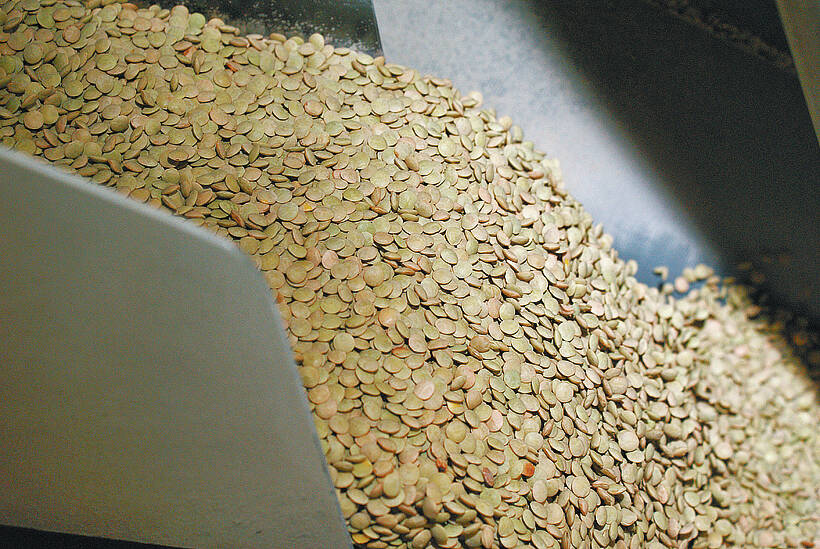Protein test needs attention
In a world of subjectivity, of many shades of grey but few black and whites, at least a few things should be certain.
A container of chemical should have the same number of litres no matter where you buy it.
A tonne should be a tonne.
And a protein measurement at one elevator should be the same as at the next one.
But apparently that is not the case.
Depending on where you go, supposedly scientific, objective protein tests can produce different results.
Read Also

Green lentil market oversupplied
Farmers in Western Canada can expect price pressure on their new crop of green lentils, as the available supplies among the world’s major lentil-growing nations increase significantly.
Garth Weiterman, a farmer at Outlook, Sask., raised the issue at a durum forum put on by the Canadian Wheat Board in Swift Current, Sask., last week.
Weiterman had results of 18 durum samples tested at a local elevator and at the Canadian Grain Commission laboratory in Saskatoon. The elevator and CGC tests were never the same and in one case, the difference was as high as 3.5 percentage points. Except in one case, the elevator measurement was lower than the CGC test.
Given that protein premiums in some years can be substantial, such a difference can carry a hefty price tag.
Why can’t farmers count on the same type of standardization in protein testers that they can in weigh scales, he wanted to know.
None of the officials had a good answer.
Len Seguin, chief grain inspector of the CGC, said it would cost a lot for the commission to check every tester. But he didn’t say it is technically or scientifically impossible to have different protein testers give consistent readings for the same grain samples
He suggested if farmers believe there is a problem with the protein levels they are getting, they should send a sample to a CGC lab.
Earl Geddes, of the Canadian Wheat Board, said protein is not a grading determinant and therefore there is no regulatory responsibility on the part of anyone to ensure the protein testers are correctly calibrated. He said perhaps the grain standards committee should consider the issue.
No grain company officials were on hand to comment, but one elevator manager said the problem is that too many makes of testers are in use.
It’s regrettable no officials could commit themselves to solving this problem. So it’s up to farmers to make this an issue that can’t be ignored.
Maybe production or marketing clubs can carry the ball. Get a sample protein tested by the CGC and then tested at local elevators.
If there is a disparity, make the elevator manager and his company know about it and demand action.














